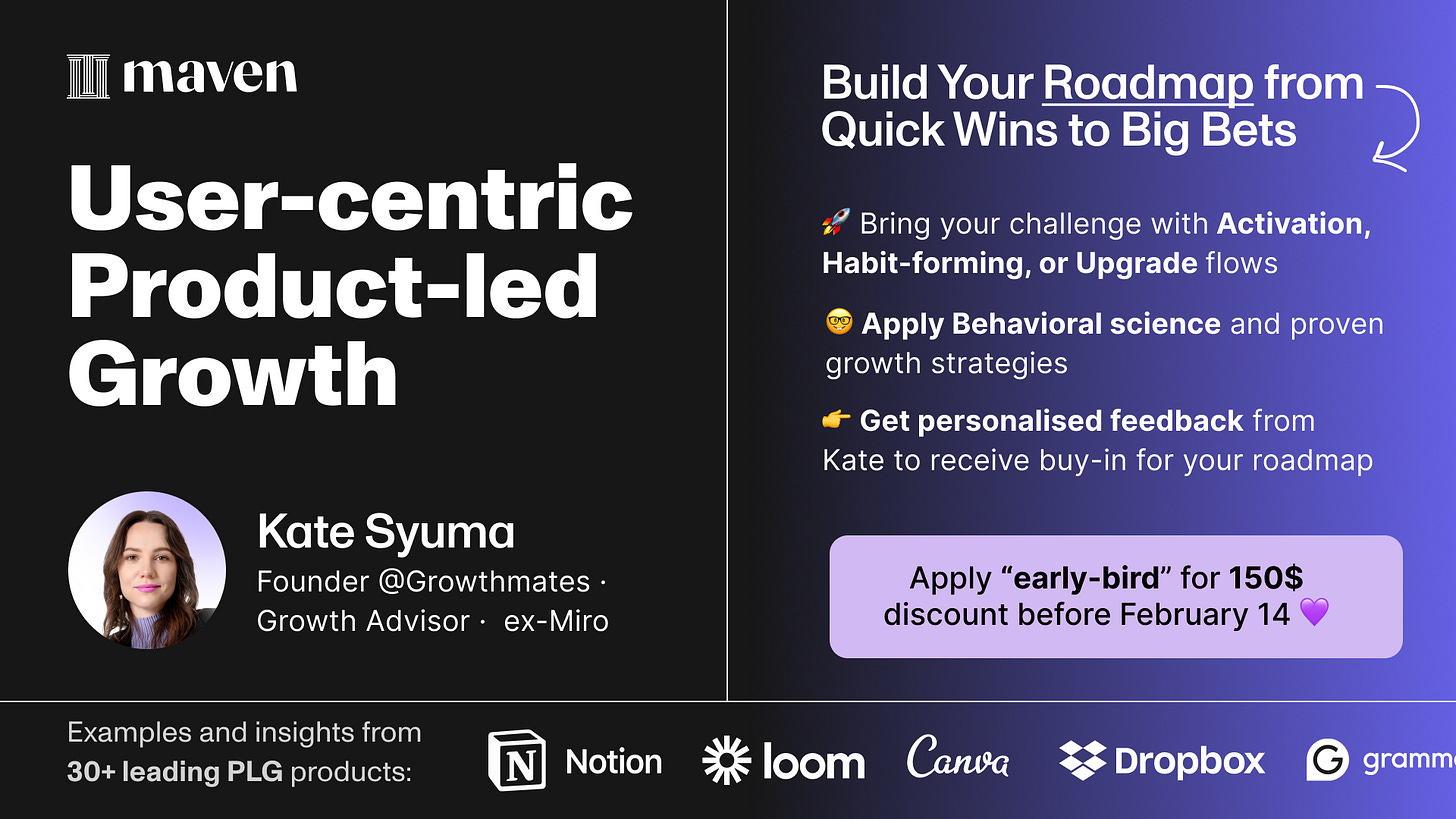3 Behavioural Methods for better Habit-forming experience
Annoyed by popups? Let's explore BJ Fogg, CREATE, and The Hook models applied to B2B and B2C products.
Hello everyone 👋 I’m Kate Syuma, and welcome to Growthmates.news — the newsletter where we explore inspiring and practical growth stories from products we love. Join the community of 5,000+ Product, Design, and Growth people from companies like Amplitude, Intercom, Miro, Atlassian, Grammarly, Framer, and more.
Everyone is annoyed by popups, and popups are still everywhere.
Why are products still using them? Because it’s the most common pattern, and there’s no handy alternative in place. But here’s the problem that traditional popups are causing:
Blindness: you got so familiar with that, so you simply skip them and close immediately 🤯.
Interruption: if they appear while you’re doing something important, your annoyance goes to the next level 🤯🤯.
Irrelevance: if the time and placement of these popups are wrong again and again, you’ll probably never return to the product again 🤯🤯🤯.
We definitely want to avoid that, and for that, we need to avoid making popups our go-to solution. To design an engaging user experience, we need to uncover real motivations and use alternative tools. I can assure you — there are plenty of them.
Before we dive in…This post is brought to you by Amplitude — the product analytics platform that helps teams understand user behavior and build better experiences. With Guides and Surveys, you can deliver helpful, well-timed messages that feel natural, not intrusive.
Today, we’ll dive into alternative methods and examples of how you could use them. In this story, expect examples from Amplitude, Spotify, Superhuman, and other B2B and B2C products.
While I was at Miro, I introduced one principle we used with the design team in Growth. Think big, start small, iterate smart. This principle also helped to treat the “overlapping popups” situation differently. When on design reviews I saw that this pattern could emerge, I kindly asked my team:
Let’s imagine that popups just don’t exist in our product and design system. How might we (HMW) solve this problem by using an alternative solution and method, and highligt the value we want to deliver to end user?
It opened my eyes to 3 things that must be done right if we want to engage users with the triggers and messages we show to them:
Right Time: users are not interrupted in the middle of important tasks. It appears with the right natural frequency that the product should be used.
Right Place: it’s not shown in unexpected or irrelevant locations.
Right Value: the content inside that message delivers value to the user
Before the actual appearance (e.g. popup, tooltip, checklist) we need to think about the logic that will deliver the value and motivate an action. For that, we need to look back at the fundamental methods of behavioral science.
I’ve been combining “User” and “Business” thinking my whole career — since my 6 years at Miro advising 15+ SaaS companies. Every company I’ve worked with has shown me ONE thing: User experience is the ultimate growth lever. That culmination inspired me to create a new course — User-centric Product-led Growth. In this course, we’re going to combine behavioral science with proven growth strategies, and you will receive my personalized feedback on your product flows.
The first cohort starts on March 24th, and my previous courses had 50+ alumni from companies like Grammarly, Intercom, Wistia, Mentimeter, and more! You’ll definitely be in great company with like-minded professionals, and you can cover the cost from your L&D budget.
Now, let’s finally dive into each of 3 behavioral methods 👇
Method 1. BJ Fogg Behavior Model
Keep reading with a 7-day free trial
Subscribe to Growthmates with Kate Syuma to keep reading this post and get 7 days of free access to the full post archives.





